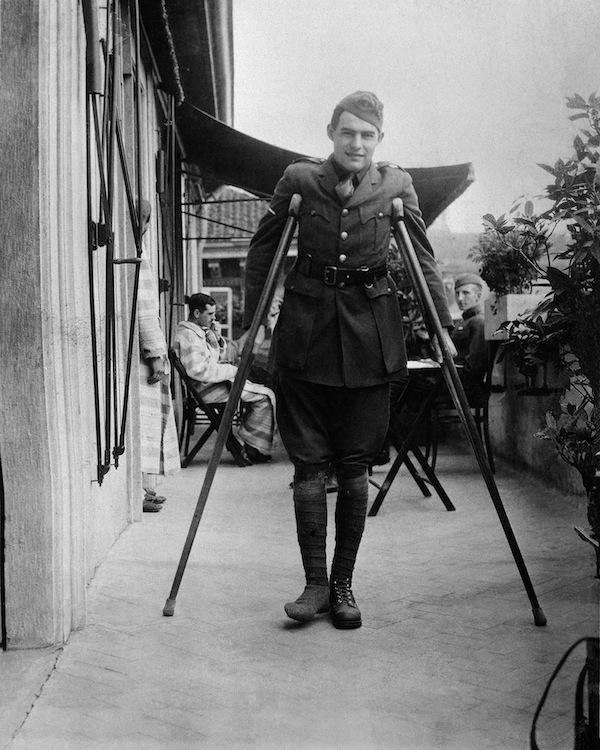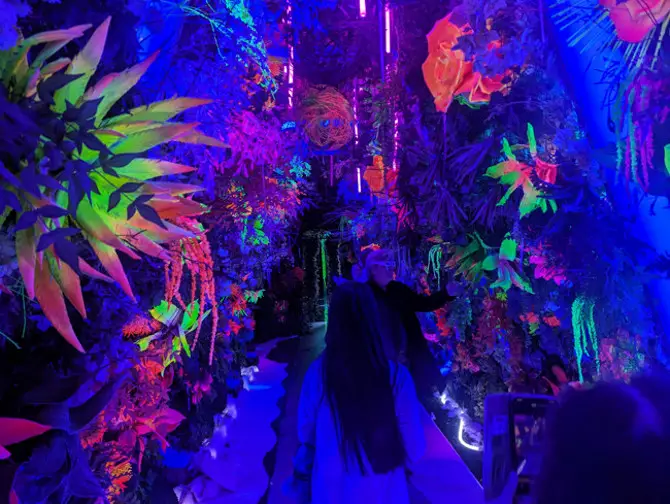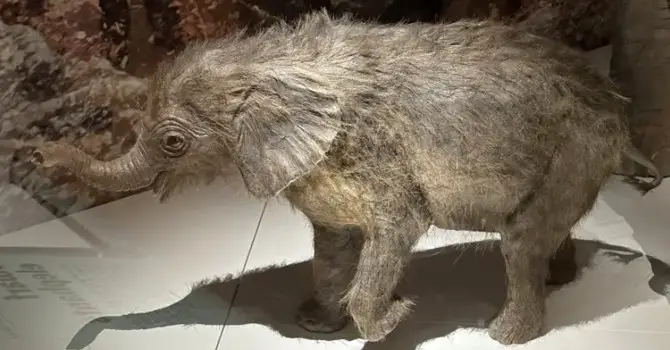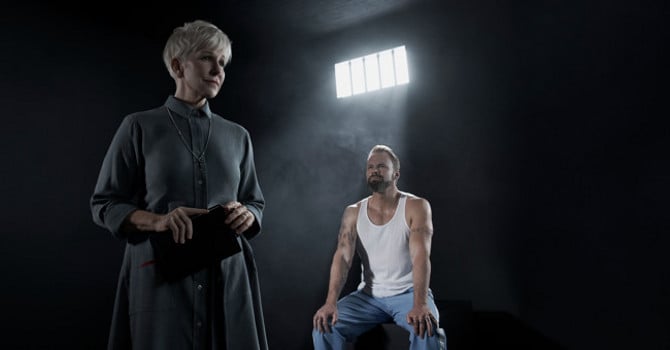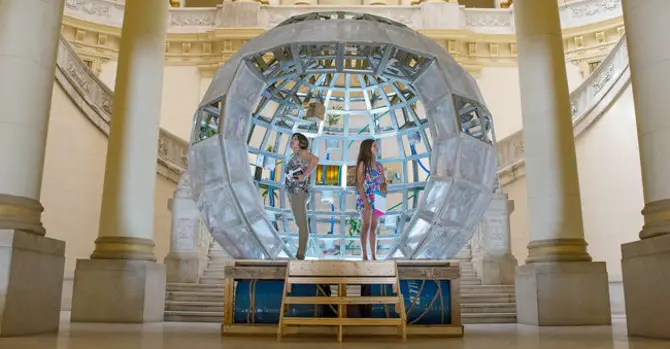Ernest Hemingway: Between Two Wars, now open at the Morgan Library & Museum, is the first-ever exhibit to explore the life and works of the legendary American writer. The collection features 100+ artifacts, including his passport, photos, dog tags, and handwritten correspondence between him and his parents, F. Scott Fitzgerald, and Dorothy Parker.
At the tender age of 18, Illinois high school grad Ernest Hemingway (1899-1961), once a cub reporter at the Kansas City Star, leapt at the opportunity to participate in WWI, feeling that being in the trenches would enhance his writing. In addition to fictionalizing his wartime experiences in novels like A Farewell to Arms (a notebook containing a draft of the book is included in the exhibit), Hemingway became one of the most prolific of American writers, also authoring legendary works like The Sun Also Rises and For Whom the Bell Tolls.
The exhibit, curated by Declan Kiely in a collaboration with the John F. Kennedy Presidential Library & Museum, is broken into six sections. “The Prophet”—a nickname given to him by his high school classmates—covers his early years after graduating high school; “WWI” looks back at Hemingway in Milan, serving as a driver for the American Red Cross. About a month into his tour, he was severely injured and had 200+ pieces of shrapnel removed from his leg. During this time, he became smitten with an American nurse, Agnes von Kurowsky, but she broke it off. You can read her "Dear John" letter in the exhibit. (Von Kurowsky served as the inspiration for the love interest in A Farewell to Arms.)
The third section is “Paris,” where Hemingway began his evolution from a journalist to a novelist, publishing a book of poetry and The Sun Also Rises, and socializing with other writers, including Gertrude Stein, Dorothy Parker, and F. Scott Fitzgerald, with whom he would develop a close friendship. The affection, respect, and at times colorful ribbing between the two writers is evident in the exhibit, particularly in correspondence when Hemingway seeks Fitzgerald’s input for the completion of Arms.
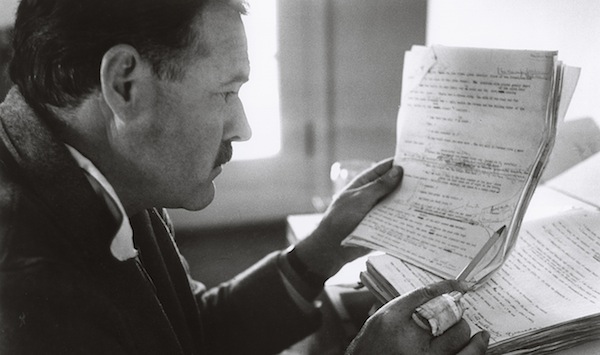
Section four is “Key West and Havana,” covering Hemingway’s move from Paris to Key West for his second and third marriages. Hemingway continued to write, including journalism like his coverage of the Spanish Civil War in 1937, as well as his further immersion with artists, including Pablo Picasso and Luis Quintanilla. It was in Key West where Hemingway completed Arms in 1929, catapulting him to success.
Section five is “WWII.” By 1944, after spending a good spell in isolation, Hemingway decided once more to put himself in the trenches. This time, as a journalist for Collier’s covering the war, he gained additional respect from his fellow men.
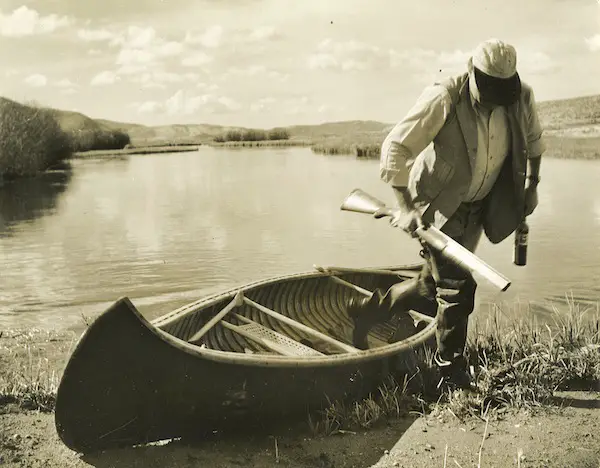
Finally, section six is “An Old Hunter Talking With Gods,” exploring Hemingway’s post-WWII life, where his writing continued with less focus. “Writing well is impossibly difficult,” Hemingway told George Plimpton, and “the time to work is shorter all the time and if you waste it you feel you have committed a sin for which there is no forgiveness.” This was also when Hemingway won his highest accolades—a Pulitzer in 1952 for The Old Man and the Sea, and a Nobel Prize in 1954.
Ernest Hemingway: Between Two Wars is on display at the Morgan through Jan. 31, 2016.


